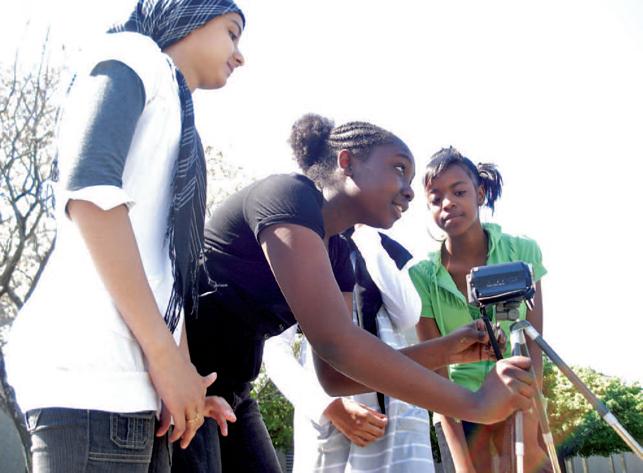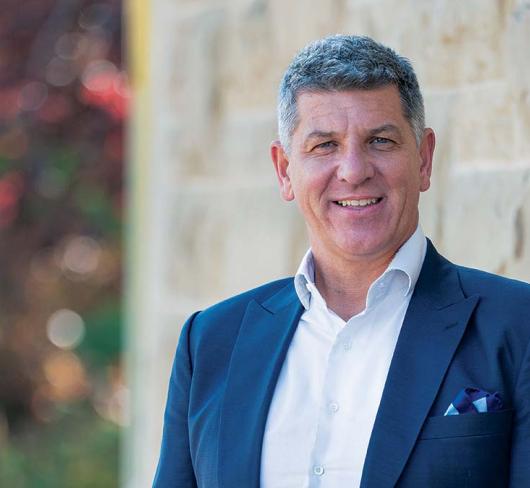
The Message and the Medium: Teaching Social Justice With Technology
“Our society should look past each other’s skin colours, languages, cultures and backgrounds. Kids can achieve a lot and we can spread this message. If we start now, then we will have a different future than the world we have now.”
These powerful words are from Farzana, a normally quiet grade 8 student. She admits that when she started to wear hijab three years ago, people bothered and taunted her. But she has gained confidence in herself and now speaks freely about discrimination. Farzana is just one of the students in my class who has found the vocabulary and the voice to discuss difficult issues like prejudice. Perhaps winning a national video competition had something to do with it.
Are You Sure?
When the secretary at my school told me one day in February that I had a phone message from Citizenship and Immigration Canada I was shocked. My class had recently entered a contest sponsored by this federal department, called “Racism. Stop It!” The competition invited students ages 12 to 19 from across Canada to submit a 60-second public service announcement with an antiracism message.
Our video, Are You Sure?, was one of 10 national winners – the only winning video from Ontario – and the prizes for the contest were incredible. We won a digital camcorder for the school and our video will air on CBC/Radio-Canada television for one year. But the greatest honour was that I accompanied five student representatives from my class on an all-expenses-paid trip to Ottawa. During three days, we met the other winners and had many interesting conversations with teachers and filmmakers about combining social justice teaching with technology.
Expertise for the asking
My class came to enter the contest rather accidentally. In October, I received a flyer at a meeting of the Political Action Committee of the Elementary Teachers of Toronto. It offered free workshops by the National Film Board for students across Ontario. Facilitators would come to a classroom and assist the class in creating a video entry for the national “Racism. Stop It!” competition.
I thought that working on this topic using technology would certainly engage my students in a meaningful way. Also, I had never produced video work with my class, and I felt I needed some professional learning. One month later, two facilitators from the NFB arrived in my classroom and stayed for two days. In that time, they showed us how to make a movie from beginning to end.
First we developed a message, which was perhaps the most interesting part of the process. Our video is about stereotyping, which, my student Juenelle explains, “is just as bad as racism. It is one of those forms of racism that just slides under the radar.” My students told me that stereotyping affected them more than direct racism. They live in Scarborough, where 84 percent of the population are visible minorities, according to their city ward profile. My students told me that there were negative and positive stereotypes, but that all assumptions limited their ability to just be themselves. They wanted to tackle this issue directly by challenging some of the main stereotypes they had themselves experienced.
Challenging assumptions
In our video, we ask the viewer “True or False?” as a frame for the statements that follow. Then we show several scenes where the assumptions of the text directly conflict with the video. “Black people are good at basketball” is the first message, followed by footage of Caribbean students missing the net. “Asians are good at math” precedes a scene in which several Chinese and Vietnamese students fail a math test. In the third clip, a white student break-dances after the message “White people can’t dance.” Finally, the film states “Racism doesn’t exist in Canada” and then shows Farzana alone at her locker, crouched on the floor with her face buried in her hands. Our final screen asks “Are you sure?”
After deciding on the content of the video in the morning of the first day, the students used the afternoon to create a storyboard, assign roles and tasks to all students, and rehearse scenes. The second day was devoted to filming scenes, editing footage in iMovie, and writing original background music using the software GarageBand. The choice of these particular computer applications allowed students to get involved very quickly, since the programs are so user-friendly and visual.
The power of being heard
Winning the contest has had a lasting impact on my students. We received exciting media attention from several local newspapers, and I think that the students will always treasure their news clippings. Some students have indicated a newly discovered interest in pursuing a career in a media-related field. More importantly, all of the students experienced the power of having their ideas taken seriously. They feel empowered to make a difference and to combat racism in our society.
According to one student named Dan, “As a society – no matter any age, gender, or race – we can combat racism by understanding people from different backgrounds and appreciating that we have so many diverse cultures in Canada. Because, seriously, would you really want the world to have only your type of race? You can probably agree that it would be pretty boring.”
To view the video Are You Sure? and for details about how to enter the “Racism. Stop It!” video competition next year, visit cic.gc.ca/march-21-mars.

